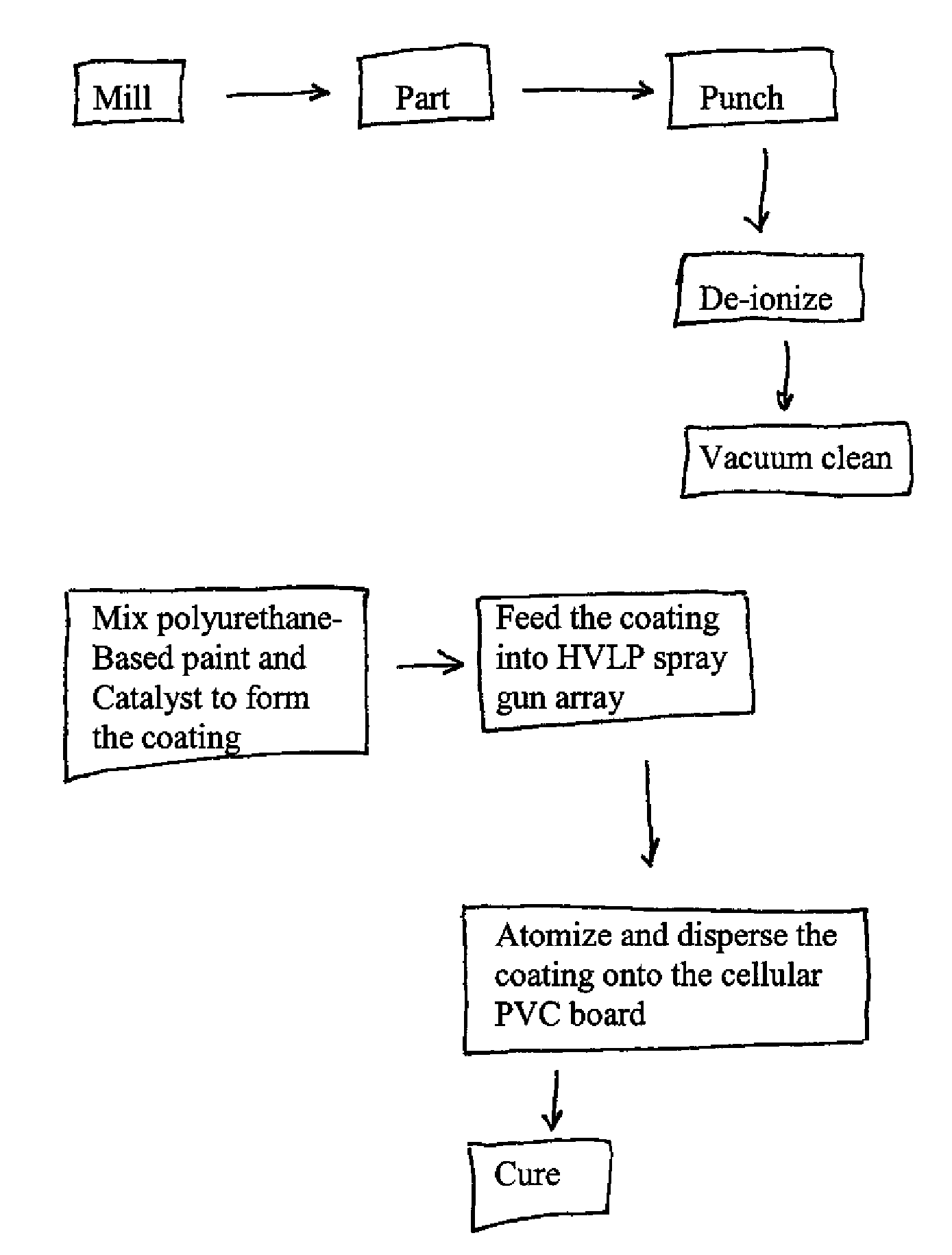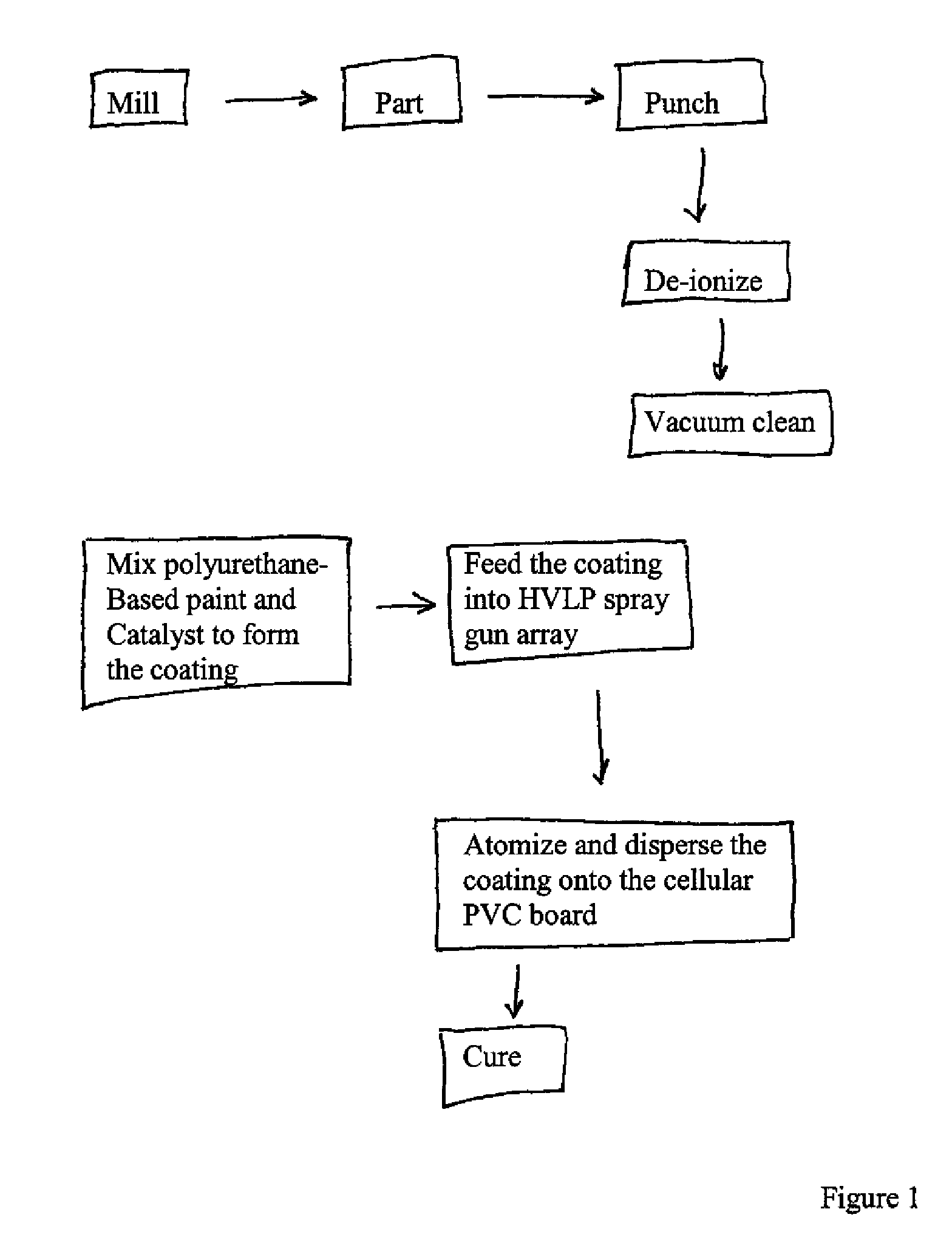Method forming a polyurethane coated cellular polyvinylchloride board for use as siding
- Summary
- Abstract
- Description
- Claims
- Application Information
AI Technical Summary
Benefits of technology
Problems solved by technology
Method used
Image
Examples
example 1
Exemplary Coating I
[0029]
Example 1.Exemplary Coating I.CompositionWeight Percent (wt %)Acrylic Polyurethane36Methyl n-Amyl Ketone9n-Butyl Acetate12Oxo-Heptyl Acetate2Amorphous Precipitated Silica7Titanium Dioxide34Volatile organic compounds (“VOC”): 2.78 pounds / gallonSpecific gravity: 1.38Coating density: 11.45 pounds / gallon
example 2
Exemplary Coating II
[0030]
Example 2.Exemplary Coating II.CompositionWeight Percent (wt %)Acrylic Polyurethane36Methyl n-Amyl Ketone9n-Butyl Acetate12Oxo-Heptyl Acetate2Amorphous Precipitated Silica7Titanium Dioxide34VOC: 2.77 pounds / gallonSpecific gravity: 1.38Coating density: 11.47 pounds / gallon
example 3
Exemplary Coating III
[0031]
Example 3.Exemplary Coating III.CompositionWeight Percent (wt %)Acrylic Polyurethane31Acetone7Methyl n-Amyl Ketone11n-Butyl Acetate14Oxo-Heptyl Acetate2Amorphous Precipitated Silica7Barium Sulfate2Titanium Dioxide26VOC: 3.42 pounds / gallonSpecific gravity: 1.28
Method.
[0032]Referring to FIG. 1, prior to coating the specially formulated cellular PVC board, the cellular PVC board is de-ionized and vacuum cleaned. An exemplary de-ionization and vacuum system is that developed and manufactured by SIMCO and described by SIMCO as a neutro-vac intake in which an MEB / ME 100 static bar is used to eliminate charges on the cellular PVC board. In an exemplary method, the cellular PVC board passes at a rate of about 200 feet per minute under a static bar to neutralize any existing charges. The cellular PVC board then passes under a stiff bristle brush and an aggressive blast of about 100 pounds per square inch (“psi”) of compressed air which lifts debris from the cellula...
PUM
| Property | Measurement | Unit |
|---|---|---|
| Thickness | aaaaa | aaaaa |
| Thickness | aaaaa | aaaaa |
| Pressure | aaaaa | aaaaa |
Abstract
Description
Claims
Application Information
 Login to View More
Login to View More - R&D
- Intellectual Property
- Life Sciences
- Materials
- Tech Scout
- Unparalleled Data Quality
- Higher Quality Content
- 60% Fewer Hallucinations
Browse by: Latest US Patents, China's latest patents, Technical Efficacy Thesaurus, Application Domain, Technology Topic, Popular Technical Reports.
© 2025 PatSnap. All rights reserved.Legal|Privacy policy|Modern Slavery Act Transparency Statement|Sitemap|About US| Contact US: help@patsnap.com


